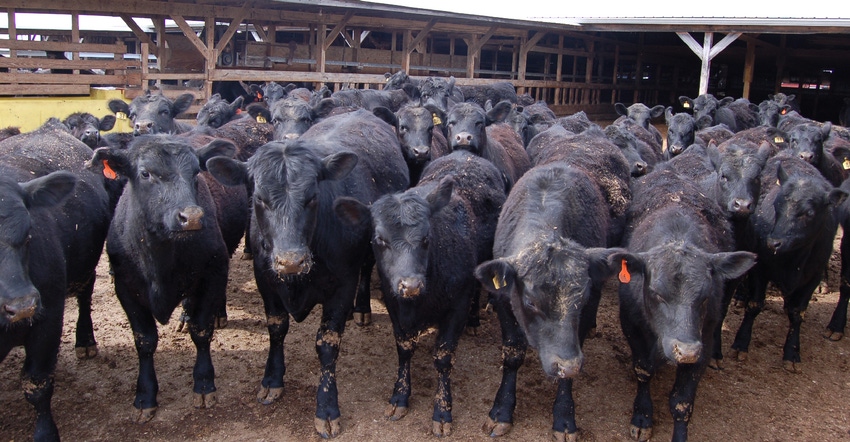
When you hear the phrase “Indiana Beef Evaluation Program,” you probably think of the IBEP bull test program. The long-standing program is conducted at the Feldun Purdue Ag Center at Bedford, Ind., with both winter and summer tests. Typically, roughly 100 bulls are auctioned each April from the test, with the highest-indexing bulls of each breed offered for sale.
IBEP conducts another beef testing program. The Indiana Beef Evaluation and Economics Feeding Program (IBEEF) provides valuable information for producers who want data on how well animals produced in their herd perform in a feedlot, and how well they score on the rail.
“It’s a great opportunity to see where your animals stack up against other progressive cattle produced in Indiana,” says Norman Voyles Jr., Martinsville, Ind. He, his brother Jim and his son Kyle farm and operate a 120-cow commercial beef herd in Morgan County. Except for 2020, they’ve entered calves in the test almost every year since it began in the winter of 1997-98.
“We have six calves in the test this winter,” Voyles says. Nearly 200 total head of calves are on feed in the 2020-21 IBEEF Program, being fed at the Purdue University Animal Sciences Beef Research Unit in West Lafayette near Montmorenci.
Valuable information
The data collected on each calf includes information on average daily gain, pounds of feed per pound of gain and feed cost per pound of gain, Voyles says. The emphasis is on data that cattle producers can use to evaluate how well sires or even grand-sires performed in producing calves that are profitable to raise and market.
Besides feedlot data, each animal is tracked once marketed, and carcass data is recorded and reported on individual animals. That includes such information as rib-eye size, dressing percentage, yield grade and whether the animal was graded Select or Choice.
“When we’re making decisions about how to improve the genetics of our herd, it’s important to have this kind of information,” Voyles says. “The information is only valuable if it comes back in a form you can use.
“The Purdue Extension people who work with the program today are doing a good job of getting us the right information we need to make decisions. It’s also a good benchmark on if you’re making progress in your breeding program, because you can see where your cattle stack up against those from other producers.”
The bottom line is producing a product the consumer wants and will pay top dollar for, and that is where the carcass information proves valuable, Voyles says. It’s also a measuring stick for whether your cattle are turning out the amount and quality of carcass you think they are, he adds.
Nick Minton, headquartered at the Feldun Purdue Ag Center, heads up the IBEP. He is responsible for both the bull testing program and IBEEF. Learn more here, or email Minton.
The next opportunity to enroll calves in IBEEF will be fall 2021. There is an entry fee for each animal, plus yardage and feed costs. Producers are paid based upon the market value of each animal at the end of the test.
About the Author(s)
You May Also Like




